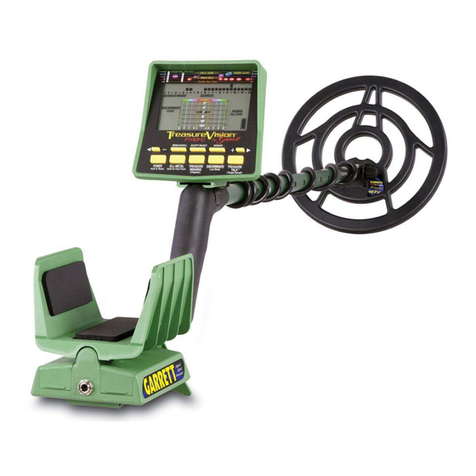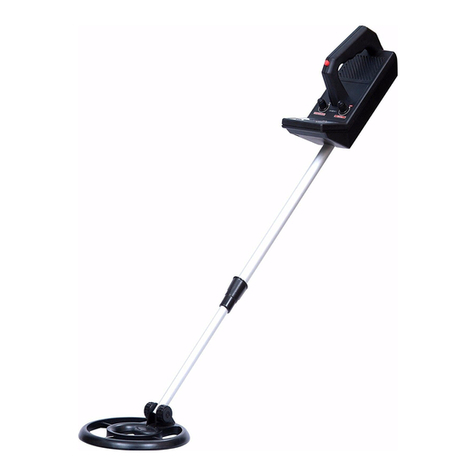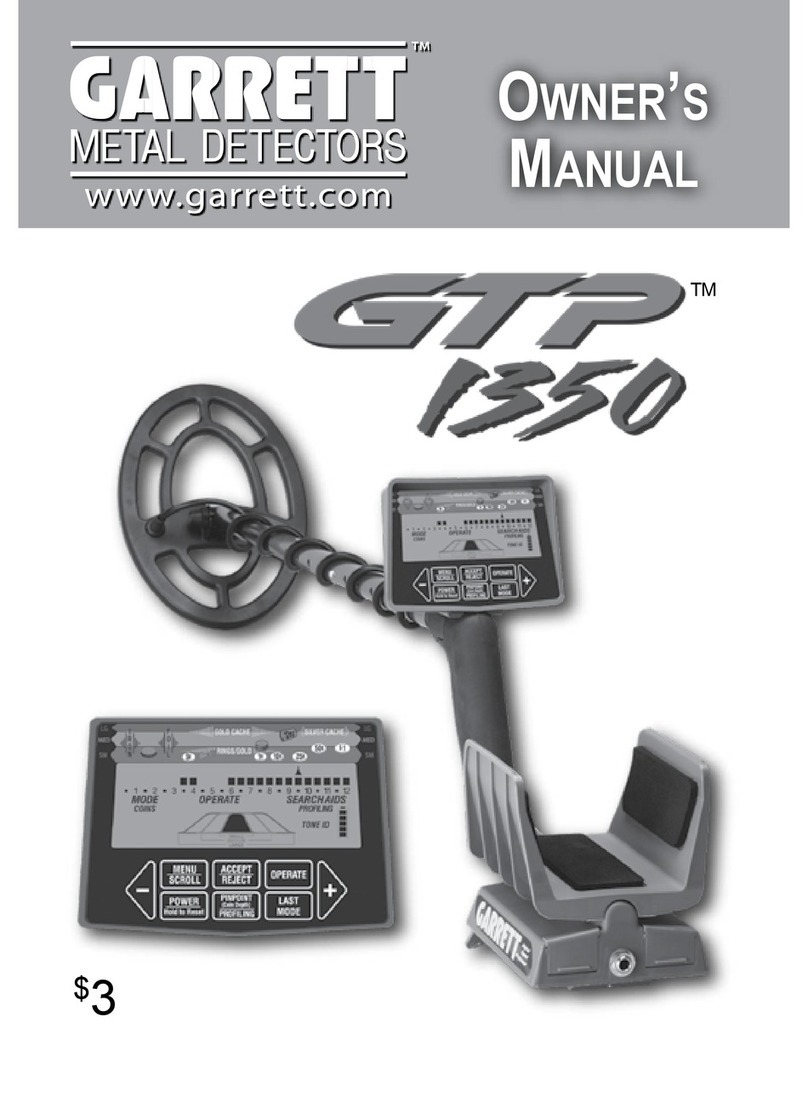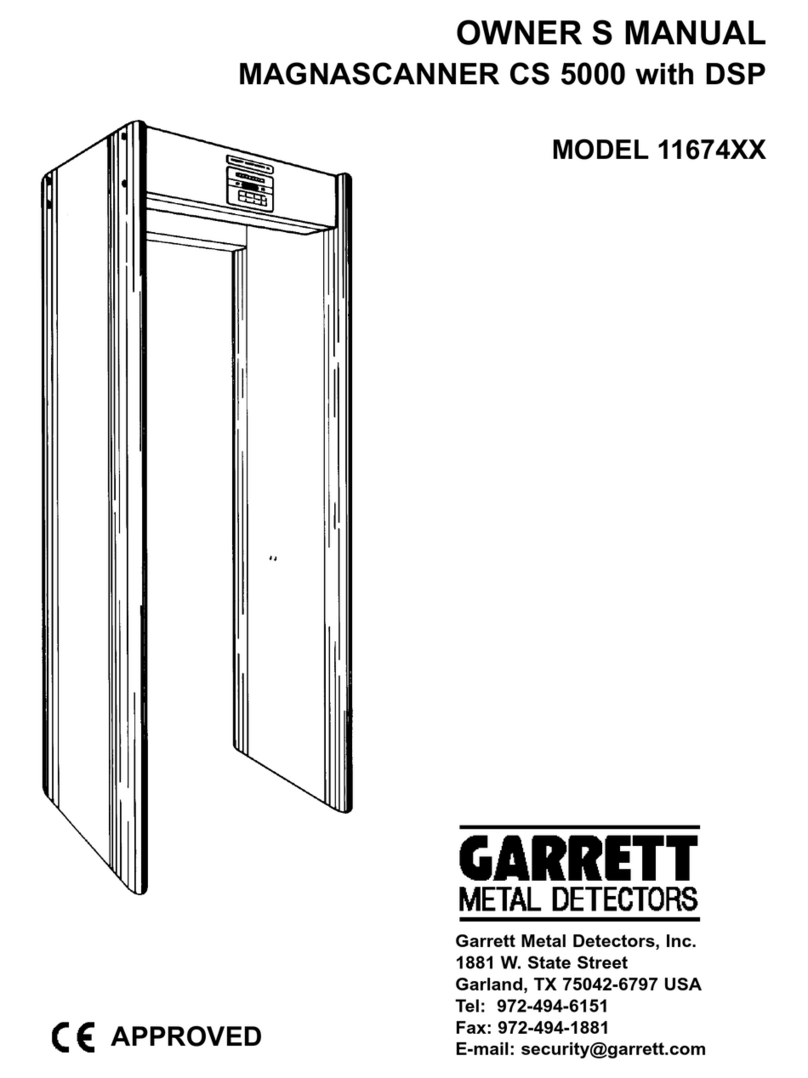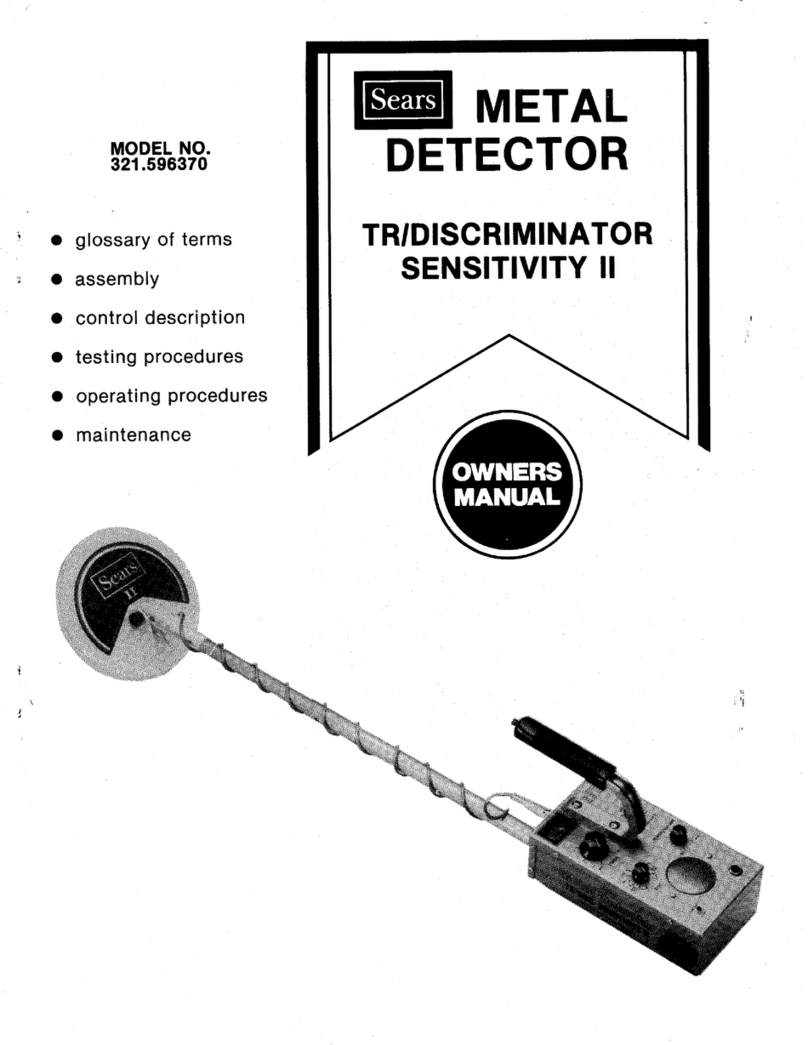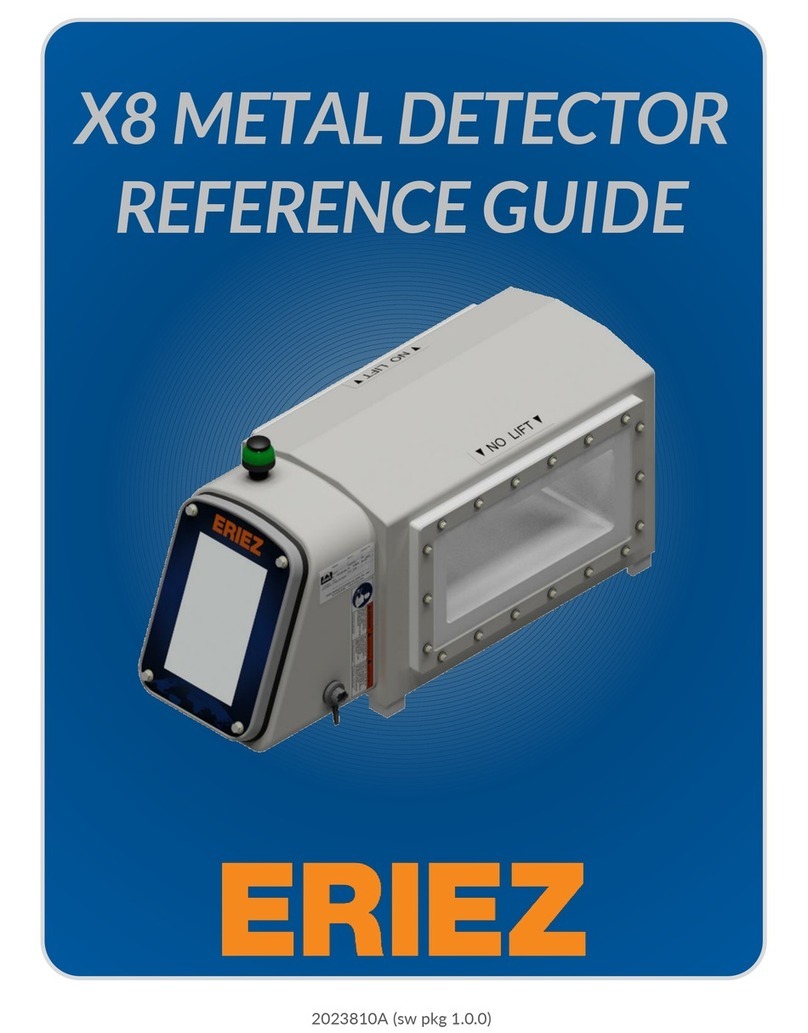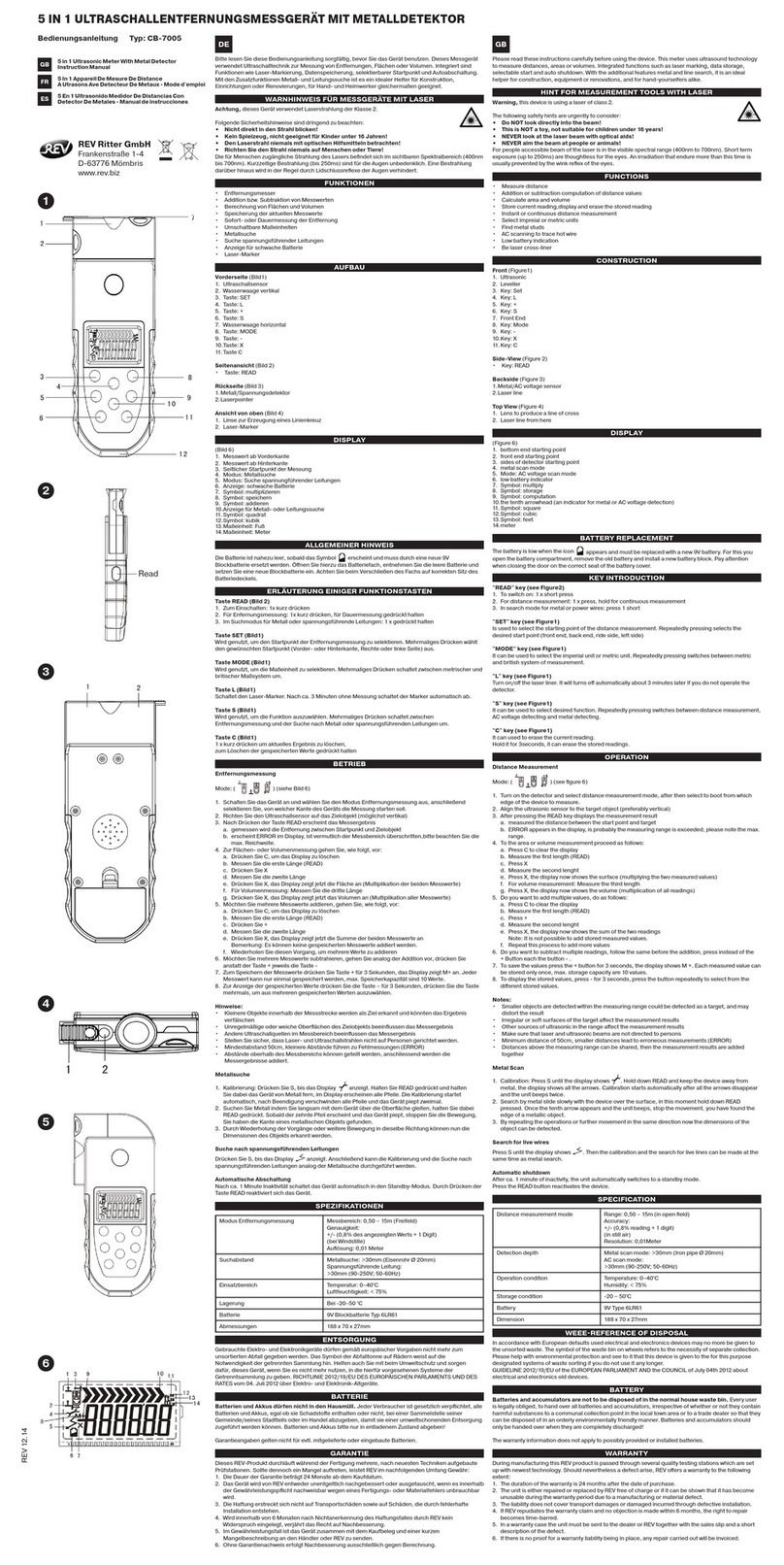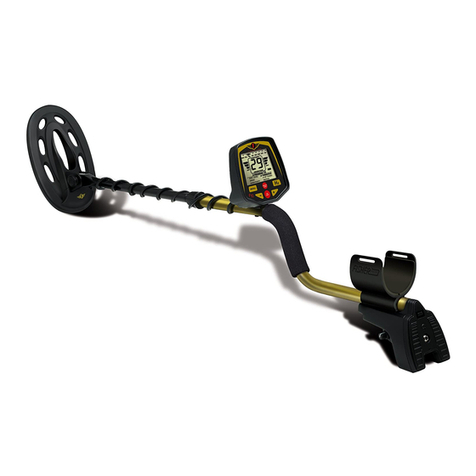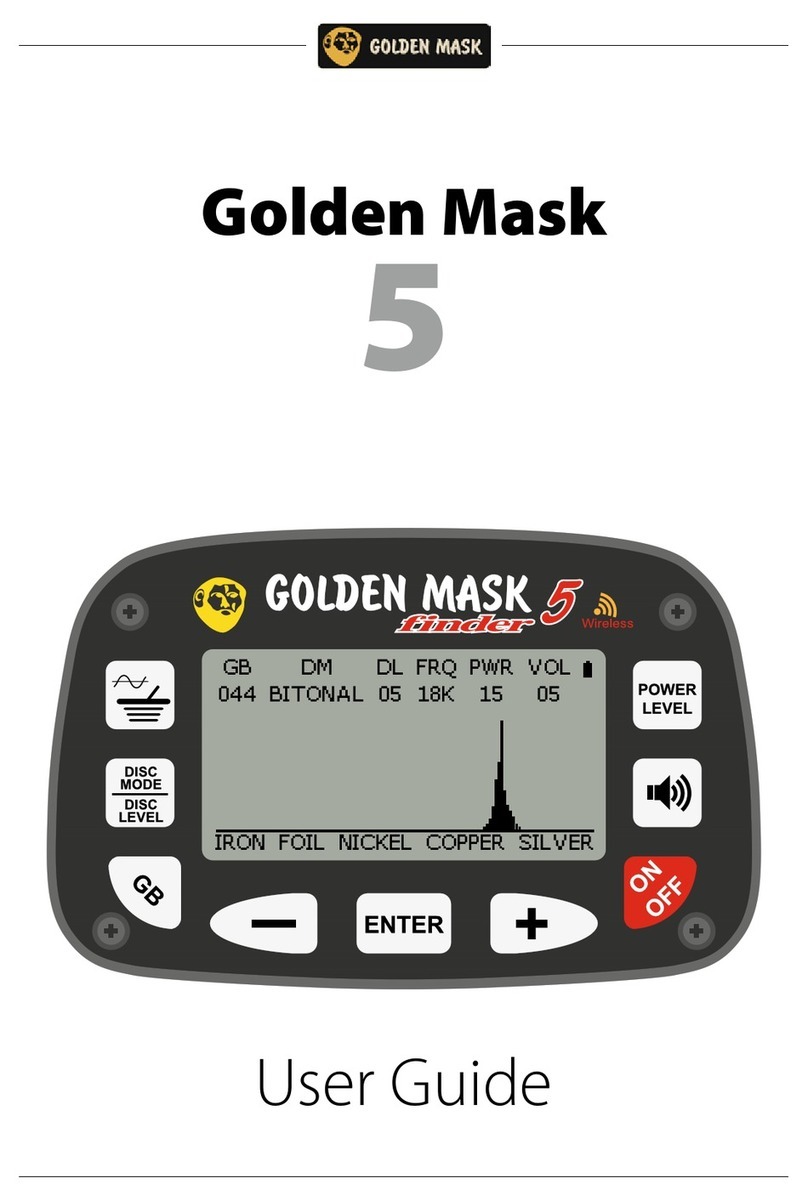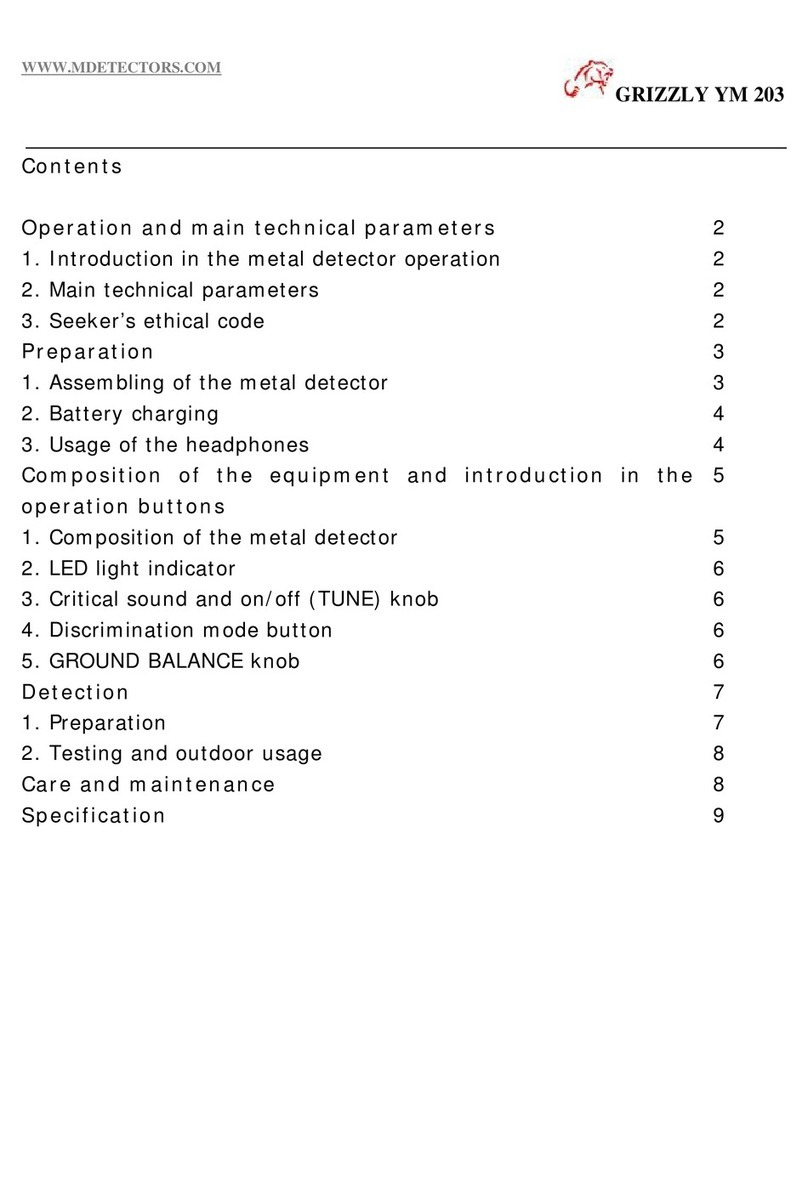
9EN
7GROUND BALANCE
The ground balance setting
can be adjusted in two ways:
manually (Hd) and automatically (At).
You can switch between these two options by
pressing repeatedly.
Once the ground balancing is completed,
press to continue searching.
The current ground balance value is shown in
the lower-left corner of the screen, below the
GEB icon.
It’s very important to always set the
ground balance before starting the
search. If the detector isn’t properly ground
balanced, its searching abilities may be reduced
that way causing unstable operation and
production of false responses. To minimize the
eects that ground minerals have on the
detector’s performance, it’s necessary to
regularly set an accurate ground balance,
especially when changing a search site.
Find an area where there is no metal.
Press and switch the detector to the
ground balance mode. If necessary,
press repeatedly to set the manual
mode. The letter-value Hd will be shown
below the GEB icon, and a current ground
balance value will be displayed in the
Target ID eld.
In a smooth motion - the key is, with no
sudden movements and bumps - move
the coil up and down at the height of 3-40
cm above the soil surface so that the coil
passes over without touching it.
While moving, analyze the sounds emitted
by the detector in this mode. If the device
produces a low tone when you move the
coil closer to the ground, increase the
ground balance value using . If the
detector emits a high tone, do the
opposite action – decrease the value
using . Press the buttons several more
times until you get such GEB value when
the sounds become as quiet as possible or
completely silent while the coil is swung
over the ground.
Upon completion of ground balance,
press to continue detecting - a new
ground balance value will be displayed in
the GEB eld.
Find an area where there is no metal.
Press and switch the detector to the ground
balance mode. If necessary, press repeatedly
to set the automatic mode. The letter-value At will
be shown below the GEB icon, and a current
ground balance value will blink in the Target ID eld.
In a smooth motion - the key is, with no sudden
movements and bumps - move the coil up and
down at the height of 3-40 cm above the soil
surface without touching it.
While the coil is moving over the ground, the
detector starts calibrating itself to the local
ground conditions and ne tuning the ground
balance value. Repeat this exercise several times
until the sounds become as quiet as possible or
completely silent while the coil is swung over
the ground and you get a constant ground
balance value. Thus the detector automatically
adjusts the ground balance in the same way as
it is performed manually by the user.
Once the automatic ground balance is
completed, avoid sudden movements with the
coil to prevent values changing. To exit the
mode, use . A new ground balance value
will be displayed in the GEB eld. Sometimes,
upon completion of automatic ground
balancing procedure, it’s recommended to also
switch to the manual mode and adjust the
ground balance more accurately.
MANUAL GROUND BALANCE AUTOMATIC GROUND BALANCE
1.
2.
3.
4.
5.
1.
2.
3.
4.
5.


